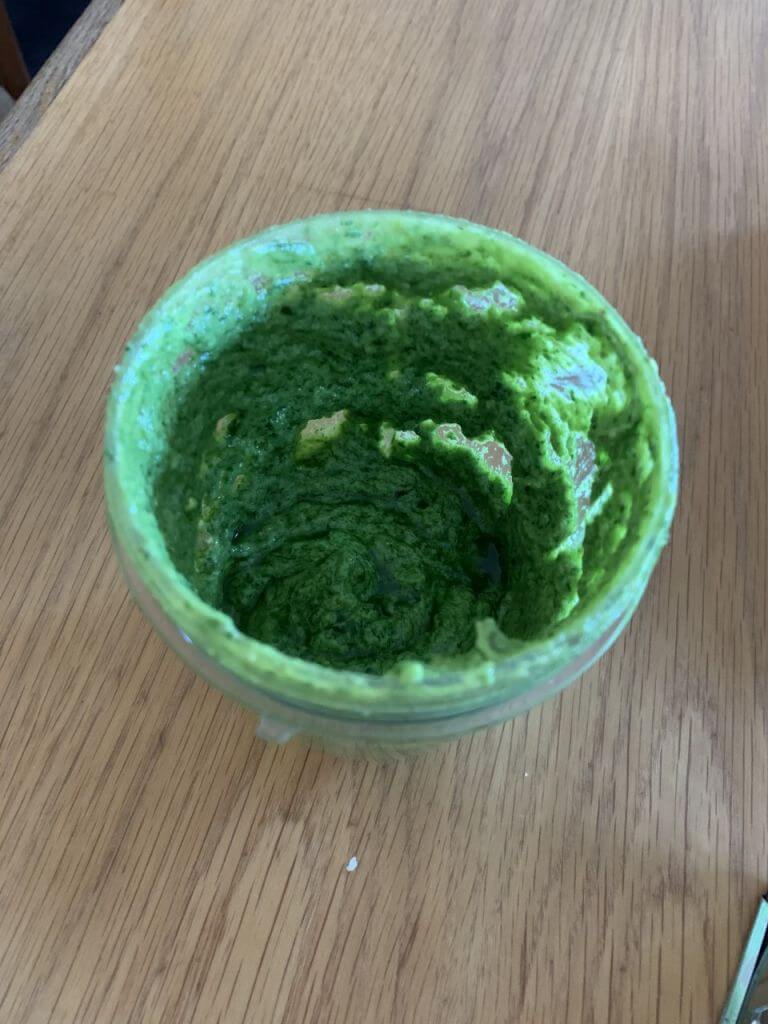
A recipe for the future – wild garlic pesto
Another delicious recipe from Emily, who searches for the last of the wild garlic to make this tasting dish!
When I was thinking about subjects for my blog, the one thing that I kept coming back to, was the wild garlic pesto we made a couple of years ago. So, with Mum telling me it was much too late for wild garlic, I looked online and discovered there may still be some late wild garlic around. Then, we were on a mission! We headed off to our secret Wild Garlic patch -and luckily, we didn’t have to look too far. There wasn’t much and it looked a little sad and wilted, but we started sifting through what was left. I picked some and mum decided it wasn’t the right colour, so she threw it aside and went off to pick it herself.

Once we got it home, we still weren’t convinced – it didn’t really smell very garlicy like the bright green firm leaves we’d picked last year. But undeterred, we decided to give it a go. First, we blanched the leaves in boiling water for about 30 seconds then quickly transferred them into cold water to stop them cooking. Next, we dried the leaves and squeezed out any remaining water. My mum then chopped up the leaves as finely as possible, put them in a glass jar and covered them extra virgin olive oil, ready for when we next had pasta.

The green mush remained in the fridge for a couple of days. We still weren’t convinced, so Mum blended a teaspoon of the pesto in some mayonnaise first, to check it was ok – and it was. The old leaves were not as strong in flavour, but it was delicious. So, we decided we’d make pesto. We started by toasting a good handful of pine nuts in a dry frying pan, grating some parmesan cheese, and squeezing a lemon. After that, we put the wild garlic (already mixed with oil) in the blender along with the nuts, lemon juice, cheese, salt, and a bit more extra virgin olive oil. We then blended it until it was relatively smooth. We also added a couple of tablespoons of double cream to improve the consistency (and the taste).
Finally, when the pasta was cooked, we added the pesto.
It was delicious – much better than I had remembered. I would definitely recommend making it – but maybe wait until next year when the wild garlic is at its best.
-Emily Neighbour
Related news
Grazing livestock in the Chilterns
With spring comes longer days, warmer weather and livestock grazing on lush spring grass.
Chilterns New Shoots: applications now open!
Applications are now open for the 2024/25 cohort of Chilterns New Shoots – a wildlife and conservation programme for 14-18 year-olds.
Bluebells: the sign of spring in the Chilterns
Bluebells flower in abundance in ancient woodland in early spring and are found throughout the Chilterns.





